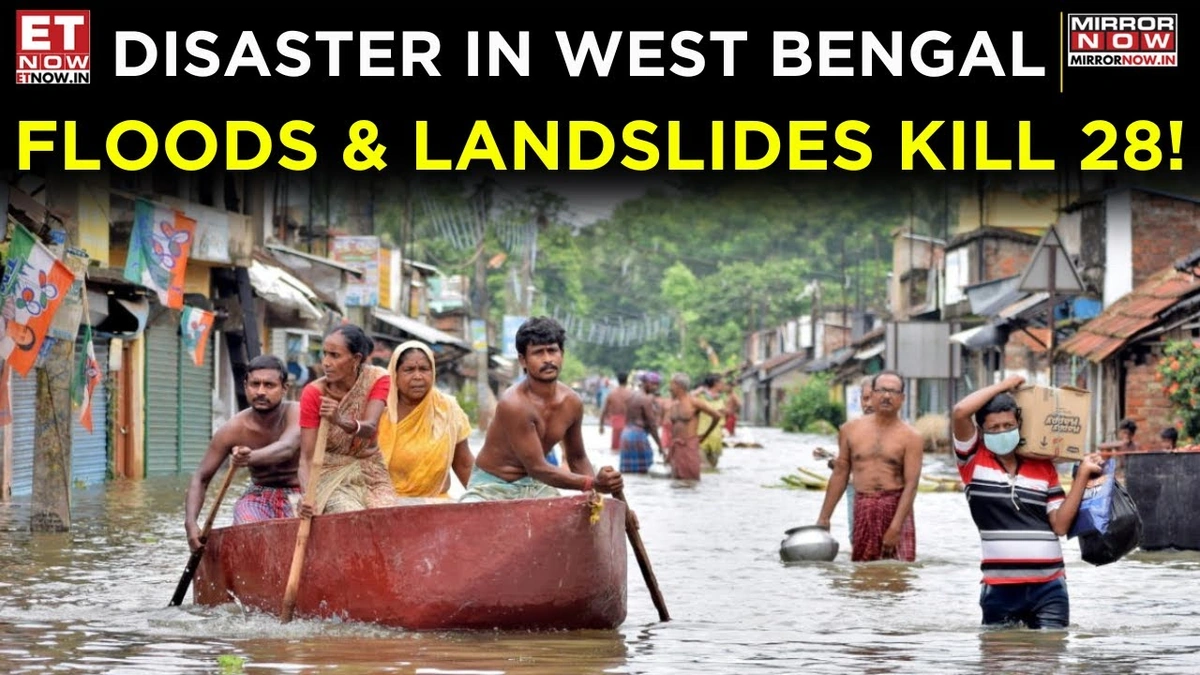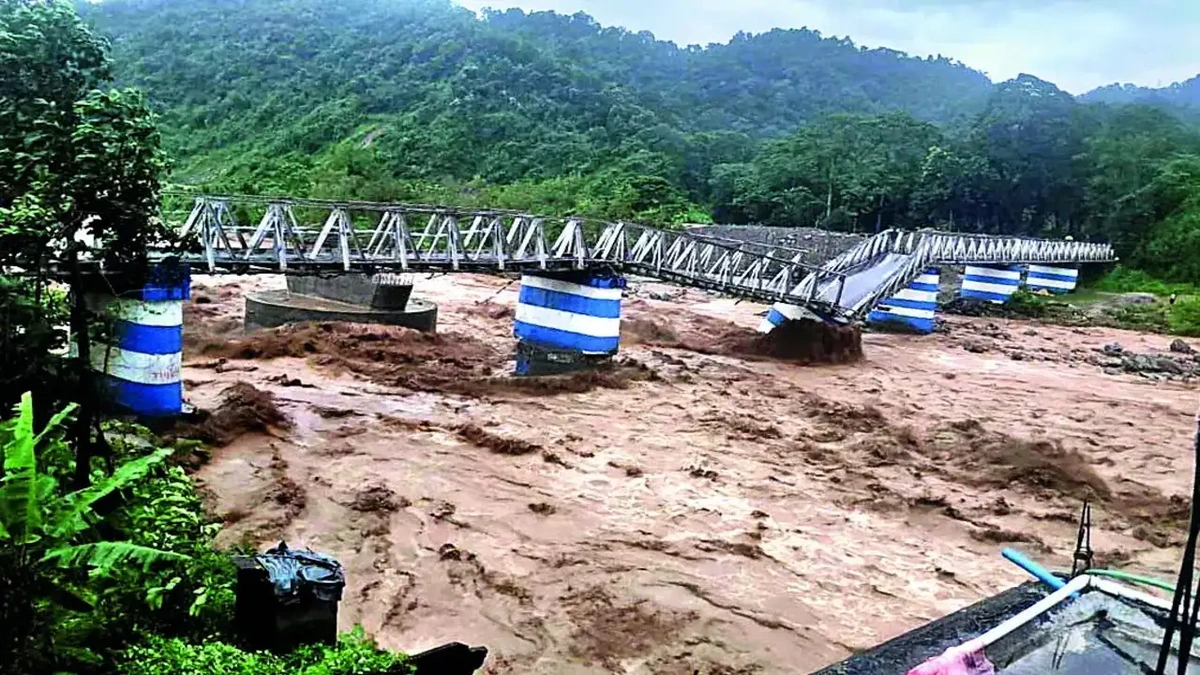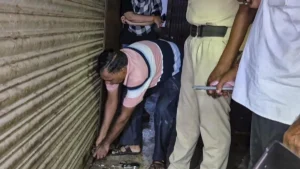Bengal Flood and Landslide Death Toll Climbs to 28; Rescue Efforts Continue
The Bengal floods have, sadly, claimed more lives. It’s a story we’re seeing all too often these days: intense rainfall, overflowing rivers, and communities torn apart. But the news headlines often miss the real story. It’s not just about the numbers; it’s about understanding why these disasters are happening with increasing frequency and what we can do about it, especially here in India. So, let’s dive deeper.
The Grim Reality | Lives Lost and Homes Destroyed

As the floodwaters slowly recede in several districts of West Bengal, the true scale of devastation is emerging. The official count states that the death toll has climbed to 28, a number that is feared to rise as rescue teams reach isolated areas. Landslides, triggered by incessant rainfall, have compounded the misery, burying homes and cutting off vital transportation links. But what’s causing these extreme weather events, and why is Bengal so vulnerable?
Why Bengal? Understanding the State’s Vulnerability
Here’s the thing: Bengal’s geographical location makes it particularly susceptible to natural disasters . Its position at the confluence of major rivers, including the Ganges and the Brahmaputra, means that heavy rainfall in the upstream regions can quickly translate into overflowing rivers downstream. And, let’s be honest, decades of unplanned urbanization and deforestation have only worsened the situation. These actions reduce the land’s capacity to absorb water, leading to rapid runoff and increased flood risk . A recent study showed a direct correlation between deforestation in the Himalayas and increased flooding in the Bengal delta.
Climate Change | The Unseen Hand
While geographical factors play a role, we can’t ignore the elephant in the room: climate change. Rising global temperatures are causing more extreme weather events, including more intense rainfall. And, unfortunately, India is one of the countries most vulnerable to the impacts of climate change. Let me rephrase that for clarity the increased rainfall intensity is exceeding the designed capacity of existing drainage infrastructure .
But, it’s not just about the rain. The rising sea levels are also threatening coastal areas of Bengal, increasing the risk of storm surges and coastal flooding. According to the latest report by the Intergovernmental Panel on Climate Change (IPCC), the sea level along the Indian coastline is projected to rise significantly in the coming decades, posing a serious threat to communities living in low-lying areas. Check out the discussions regarding climate change in related meetings .
Rescue Efforts | A Race Against Time
Amidst the devastation, rescue operations are underway, with teams from the National Disaster Response Force (NDRF) and the State Disaster Management Department working tirelessly to evacuate stranded people and provide relief. What fascinates me is the coordination required in such situations – it’s a massive logistical undertaking. But, honestly, reaching everyone in need is a challenge, especially in remote, landslide-affected areas.
The Indian Army has also been deployed to assist in the rescue and relief efforts, using helicopters and boats to reach marooned villages. Food, water, and medical supplies are being distributed to those affected, but the needs are immense. So, one cannot undermine the challenges faced during the relief distribution .
Rebuilding Lives | A Long Road Ahead
The immediate priority is, of course, saving lives and providing relief. But, we need to think long-term. Rebuilding homes, restoring infrastructure, and helping communities get back on their feet will take time and resources. What initially thought was a straightforward recovery process actually needs a multi-pronged strategy.
And it’s not just about physical infrastructure. The psychological impact of these disasters can be devastating, leaving lasting scars on individuals and communities. Counseling and mental health support are essential to help people cope with the trauma and rebuild their lives.
Mitigation and Preparedness | The Key to the Future
So, what can be done to prevent similar tragedies in the future? The answer, in short, is a combination of mitigation and preparedness. Mitigation involves reducing the risk of disasters by addressing the underlying causes, such as climate change and unplanned development. Preparedness involves taking steps to minimize the impact of disasters when they do occur, such as strengthening infrastructure, improving early warning systems, and training communities to respond effectively. The one thing you absolutely must double-check before taking any step is the authenticity of the source providing information. Read here about awareness campaigns during festivals.
A common mistake I see people make is thinking that disaster preparedness is solely the government’s responsibility. It’s a collective effort that requires the participation of individuals, communities, and organizations. It is better to prepare and prevent than to repair and repent.
FAQ Section
Frequently Asked Questions
What areas are most affected by the Bengal Floods?
Several districts in West Bengal, particularly those along major rivers like the Ganges and Brahmaputra, have been severely affected. Landslide-prone regions in the hills have also experienced significant damage.
How can I help the victims of the Bengal Floods?
You can contribute to reputable organizations providing relief and rehabilitation, such as the Red Cross or local NGOs. Ensure that any donations are directed to organizations with a proven track record and transparent accounting practices.
What is the government doing to address the Bengal Floods?
The government is deploying rescue teams, providing relief, and working to restore infrastructure. Long-term measures include strengthening infrastructure, improving early warning systems, and promoting climate change adaptation strategies.
What are the long-term effects of the Bengal Floods?
The long-term effects include displacement, economic hardship, psychological trauma, and increased vulnerability to future disasters. Rebuilding homes, restoring livelihoods, and providing mental health support are crucial for long-term recovery.
Ultimately, the Bengal floods are a stark reminder of the interconnectedness of our world. Climate change, environmental degradation, and human actions all contribute to the increasing frequency and intensity of these disasters. Addressing these challenges requires a collective effort, guided by science, compassion, and a commitment to building a more sustainable future.













